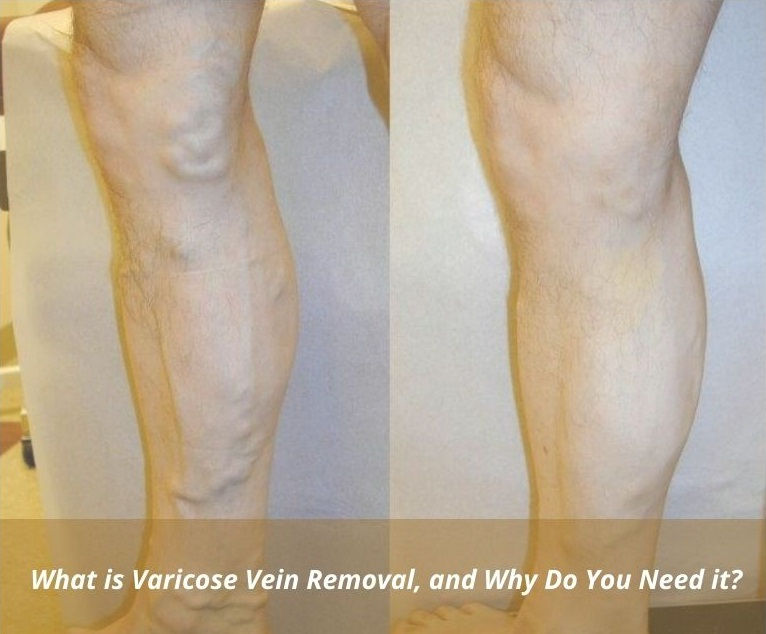Have you ever wondered what Varicose Vein Removal is and why you should get it? In this article, we will be talking about skin conditions and their treatments, with a particular focus on varicose veins. Read on to find out more!

The Potential Benefits of Varicose Vein Removal Procedure?
Varicose veins, also called spider veins, are swollen and visible veins on your body. A build-up of blood causes them in the affected area. Unfortunately, many people live with varicose veins for years because they aren’t aware of the damage it causes or don’t understand how to address it.
Varicose Vein Removal Philadelphia is a procedure that removes the excess blood from these veins and can improve a person’s quality of life by reducing pain and improving circulation. A few potential benefits of this procedure include
- reduced swelling
- improved skin tone
- and decreased chances for skin cancer development.
Varicose vein removal is a fairly simple procedure involving either hyaluronic acid or collagen injection. The treatment can reduce the risk of developing deep vein thrombosis and lengthen the length of time before varicose veins recur. However, many people have reported that their pain levels have increased once the injection was finished, so it is helpful to talk with your doctor about any concerns you might have.
Varicose veins result from increased pressure on the veins, which in turn causes them to swell and dilate. They are typically found under the skin but can also be seen outside the body. Varicose veins can cause pain, discomfort, bleeding, and even organ damage, so it’s essential to reach out for help as soon as possible.
Varicose veins are a common health condition that affects roughly 26 million people in the United States. Varicose veins can develop from heredity, being obese, being inactive, pregnancy, or being at a higher risk for other diseases like diabetes and hypertension. Varicose veins affect the circulatory system by supplying less blood to the legs. They also cause pain and swelling in the leg if left untreated.
When to Consider Varicose Vein Removal?
Varicose veins are unsightly and can lead to pain, increased risk of blood clots, and complications such as ulcers. In addition, varicose veins are often a sign of poor circulation or compromised venous valves. In most cases, vein removal is required when the vein is causing discomfort or threatens the patient’s life.
Varicose veins are caused by structural abnormalities in the veins that cause them to bulge and rupture, resulting in redness, swelling, and discomfort. In some cases, varicose veins can become more severe, resulting in a blockage or rupture of one or both legs. Varicose vein removal is recommended if you experience pain from the varicose veins, persistent swelling, or disfigurement from the vein venous network.
Varicose veins in your legs can cause pain, swelling, and inflammation. If left untreated, a varicose vein could lead to more severe issues such as ulceration or embolism. Varicose vein removal is a common cosmetic surgery that can help relieve symptoms of varicose veins.
What to Expect After the Procedure?
Before your procedure, you should plan for an overnight stay in the hospital for observation. After the procedure is complete, two items will be added to your bill: the physician’s fee and a high-tech garment that you must wear during your recovery time. The varicose veins in your leg will be dissolved using a laser, and the bleeding stops by turning off the blood flow. Once the laser is turned off, your leg will be bandaged, and you’ll have a long-lasting result.
Varicose vein removal is a minimally invasive surgical procedure that can be performed to remove varicose veins from the legs and may also be referred to as leg vein surgery. It is completed with local anesthesia, so you will not feel any pain during the actual procedure. Usually, the patient is fully up and walking within 24 hours of the procedure.
Varicose veins are not caused by aging, and they usually become more of a problem as you age. There are three types of varicose veins:
- chronic
- deep
- superficial.
Chronic varicose veins can cause pain in the legs, calf, and feet. Deep varicose veins can be found in the arteries around the legs meaning that they sometimes cause tingling sensations and other unusual feelings. Superficial varicose veins are those that appear to be red and swollen veins on your skin but don’t actually affect your circulation or heart function.
Conclusion:
Varicose vein removal is a surgical procedure that cuts into the veins of your lower legs to remove unsightly, chronic veins. This procedure improves blood circulation in the legs and relieves pain caused by long-term, untreated varicose vein disease. For specialized doctors dealing with Vein removal procedures, you can search Best Vein Doctors Near Me now for appointments.
Varicose vein removal is the treatment for varicose veins that is performed to remove the swollen, dilated, and painful veins from the legs.